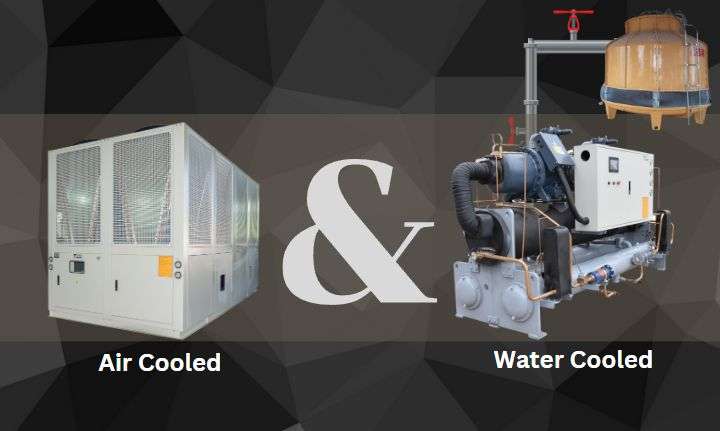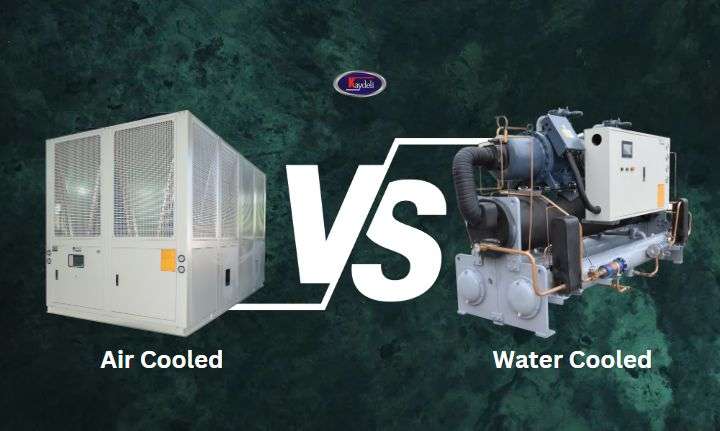
No more confusion about chiller types.
Air-cooled chillers and water-cooled chillers are two common types of chillers used in HVAC systems for cooling large commercial and industrial buildings. While both types of chillers work to achieve the same goal. The job is to remove heat from a building, but there are significant differences in how both chillers operate, their performance, and the overall cost. Here are some details to compare air-cooled chillers and water-cooled chillers:

Operation and Components:
Air-cooled chillers are designed to dissipate heat to the atmosphere using air as the cooling medium. They use a fan to circulate air across the refrigerant coils and remove the heat from the building. On the other hand, water-cooled chillers use water as a cooling medium to transfer heat from the building to the chiller. Water-cooled chillers use a cooling tower (here is a video reference of a cooling tower) to dissipate heat into the atmosphere (Air cooled chiller doesn’t require any cooling tower)
Efficiency:
Water-cooled chillers are typically more efficient than air-cooled chillers. This is because water has a higher specific heat capacity than air, which means that it can absorb more heat per unit volume. Water-cooled chillers can also operate at lower temperatures, which improves the efficiency of the refrigeration cycle. There are also air-cooled chillers that can work under low temperatures but water-cooled chillers can go much lower. As a result, water-cooled chillers can provide a higher cooling capacity for a given size and consume less energy than air-cooled chillers.
Maintenance:
Air-cooled chillers require more maintenance than water-cooled chillers because they are exposed to more contaminants in the air. The fans and coils need to be cleaned regularly to maintain their efficiency (For Kaydeli air-cooled chillers we advise commissioning once every 3 or 6 months). On the other hand, water-cooled chillers require regular maintenance of the cooling tower to prevent scaling, corrosion, and microbiological growth.
Noise:
Air-cooled chillers are generally noisier than water-cooled chillers because of the fans used to circulate air. Water-cooled chillers, on the other hand, use water pumps and cooling towers, which are typically quieter.
Installation and Cost:
Air-cooled chillers are easier to install than water-cooled chillers because they do not require a separate cooling tower. However, air-cooled chillers are typically less efficient than water-cooled chillers and may require a larger modification to achieve the same cooling capacity. Water-cooled chillers are more expensive to install because they require a cooling tower, piping, and water treatment equipment. However, they may be more cost-effective in the long run because of their higher efficiency and lower energy consumption.
In summary, air-cooled chillers and water-cooled chillers both have their advantages and disadvantages. Air-cooled chillers are simpler to install, but they require more maintenance and are less efficient than water-cooled chillers. Water-cooled chillers are more expensive to install but provide higher efficiency and lower energy consumption which is better for the long run. The choice between the two will depend on the specific needs and requirements of the building and the HVAC system.
